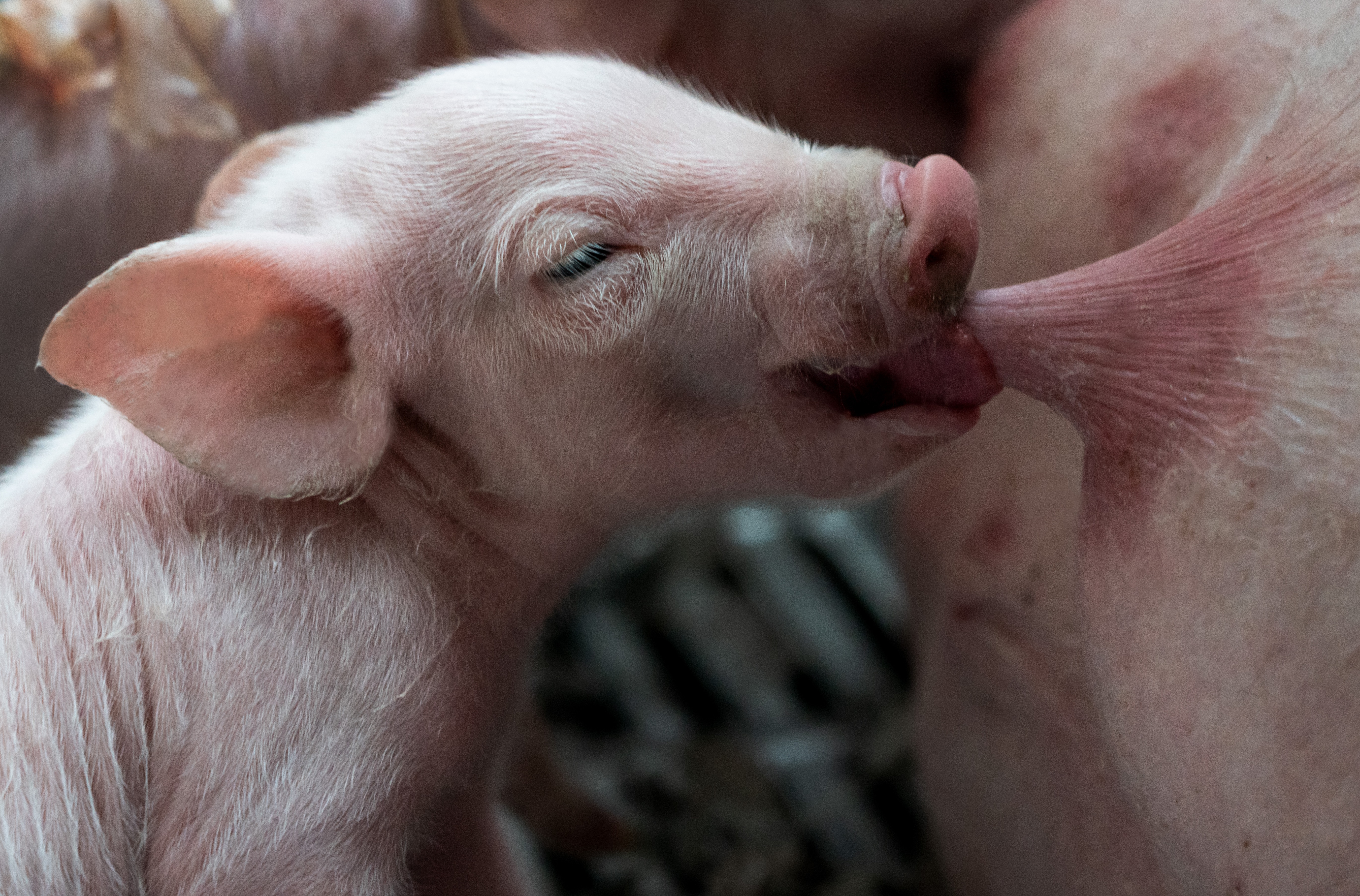Pain management in pigs
Pain compromises the welfare of the animals and reduces their performance, either milk yield or growth rate, and thereby reduces farm income.(1) The prerequisite for being able to alleviate pain is to accurately and effectively identify pain, diagnose what is causing the pain, and ultimately control pain. Pain diagnosis in pigs is difficult due to the unique individual pain response among animals.(2,3)
Different approaches have been studied for assessing pain on pig farms:
- General body function and maintenance: food or water intake, growth, and production.
- Physiological indicators of pain: cortisol blood levels, heart rate, or blood pressure.
- Behavioural changes: classified as pain behaviours (tail wagging, postration, rump scratching) or deviations in normal behaviour (increased nursing, inactivity or increased aggression amongst littermates).

There is a growing awareness of the importance of the use of NSAIDs in pigs, aimed to reduce inflammation, to alleviate pain, and to mediate endotoxin-induced effects.(1) Anti-inflammatory therapy accelerates healing rates and restores animal performance by optimising animal welfare and by reducing stress.(4)
Typical surgical procedures and main pig diseases such as castration, tail docking mastitis-metritis-agalactia syndrome, lameness, fractures, septic arthritis, and peritonitis are extremely painful diseases. For instance, locomotor disorders in pigs cause severe pain, and they need to be treated accordingly. In addition to obvious ethical considerations regarding pain alleviation, it should be kept in mind that when sows are in pain milk production is diminished and piglet mortality increases.(5) In these cases a treatment with NSAIDs is essential even before the diagnostic has been confirmed.(1,6)
Additionally, once the antimicrobial therapy has started, the addition of NSAIDs accelerates the bacteriological cure, helping to reduce antibiotic use and therefore contributing to their prudent use.(7,8)
LIVISTO is fully committed to the well-being of the animals, by providing complete solutions for pain management and for the treatment of animal diseases. Check with your distributor which LIVISTO products are approved in your area.
BIBLIOGRAPHY
1. Breen, J. The importance of non-steroideal anti-inflammatory drugs (NSAIDs) in mastitis therapeutics. Livest. J. 22, 182–185 (2017).
2. Gleerup, K. B., Andersen, P. H., Munksgaard, L. & Forkman, B. Pain evaluation in dairy cattle. Appl. Anim. Behav. Sci. 171, 25–32 (2015).
3. Pairis-Garcia, M. & Burkemper, M. Could pain management be the missing piece for pig productivity? The pig site 1–11 (2019).
4. O’Callaghan, K. Lameness and associated pain in cattle - Challenging traditional perceptions. In Pract. 24, 212–219 (2002).
5. Mustonen, K. et al. Oral ketoprofen is effective in the treatment of non-infectious lameness in sows. Vet. J. 190, 55–59 (2011).
6. Stojkov, J., von Keyserlingk, M. A. G., Marchant-Forde, J. N. & Weary, D. M. Assessment of visceral pain associated with metritis in dairy cows. J. Dairy Sci. 98, 5352–5361 (2015).
7. Mansion-de Vries, E. M. et al. Comparison of an evidence-based and a conventional mastitis therapy concept with regard to cure rates and antibiotic usage. Milk Sci. Int. 27–32 (2016).
8. McDougall, S. et al. Addition of meloxicam to the treatment of clinical mastitis improves subsequent reproductive performance. J. Dairy Sci. 99, 2026–2042 (2016).
